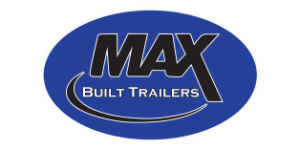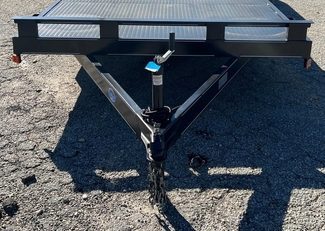Hooking up a trailer properly isn’t just about convenience—it’s critical for your safety, the safety of others on the road, and protecting your equipment. Whether you’re new to towing or just need a refresher, this guide walks you through each step of safely hooking up a trailer to your tow vehicle.
1. Inspect Your Equipment
Before hooking up anything, perform a thorough inspection of your tow vehicle, trailer, and all connection components. Make sure the trailer coupler, hitch ball, safety chains, electrical wiring, and tires are in good condition. Look for any signs of wear, rust, or mechanical failure that could cause issues during transport.
2. Line Up Your Vehicle and Trailer
Slowly back your tow vehicle toward the trailer, aligning the hitch ball with the trailer coupler. If you’re working solo, consider using a backup camera, a spotter, or alignment tools like hitch guides or magnetic hitch markers to help with accuracy.
3. Lower the Coupler onto the Ball
Use the trailer jack to raise or lower the trailer until the coupler sits directly over the hitch ball. Slowly lower the coupler onto the ball using the jack. Once it’s fully seated, lock the coupler latch into place and insert a coupler pin or lock to secure it.
4. Attach Safety Chains
Cross the safety chains beneath the tongue of the trailer in an “X” pattern before attaching them to the vehicle’s hitch. This crossing pattern creates a cradle to catch the tongue if it disconnects from the ball, reducing the risk of it hitting the ground. Ensure the chains have enough slack for turns but don’t drag on the ground.
5. Connect the Trailer Wiring Harness
Plug the trailer’s electrical connector into the vehicle’s trailer socket. Test all lighting functions—brake lights, turn signals, running lights, and hazard lights—to ensure they work properly. A malfunctioning light setup can lead to accidents or legal issues.
6. Raise the Trailer Jack
Once everything is connected, fully raise the trailer jack so it doesn’t drag or interfere with travel. Lock it in place if it has a pin or latch mechanism.
7. Perform a Final Walkaround
Double-check all connections: the coupler is latched and locked, chains are crossed and secured, lights are working, and the jack is raised. Also, inspect tire pressure and lug nuts, especially if the trailer has been sitting for a while.
8. Start Driving with Caution
Take it slow at first and perform a few gentle turns and stops in a safe area to ensure everything feels stable. Be aware of increased stopping distances and reduced acceleration. Make wider turns and avoid sharp maneuvers to prevent trailer sway.
Common Mistakes to Avoid
- Forgetting to latch the coupler or insert the safety pin
- Neglecting to test trailer lights
- Skipping the cross-chain pattern for safety chains
- Driving without adjusting side mirrors for trailer visibility
Trailer Hook-Up Safety Products We Recommend
- CURT Tri-Ball Hitch with Hook: Durable and versatile option for multiple trailer types.
- Reese Towpower Coupler Lock: Adds theft protection and keeps your coupler securely latched.
- Hopkins Towing Solutions LED Tester: Handy device for checking trailer light functionality.
- Fastway ONEstep Wheel Chocks: Prevents trailer movement during hookup and storage.
Conclusion
Taking the time to hook up your trailer properly is an investment in your safety and peace of mind. By following these steps and avoiding common mistakes, you can enjoy a secure and efficient towing experience every time.
Need a trailer or towing equipment? Browse our Resource Center for expert advice, product recommendations, and tips on trailer ownership.





